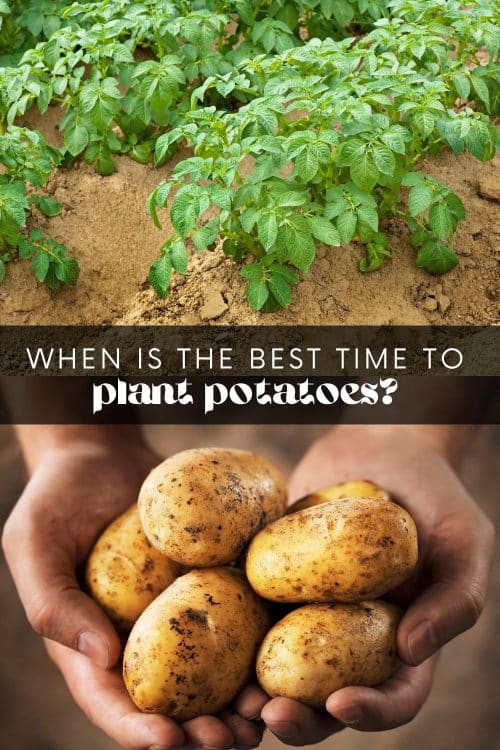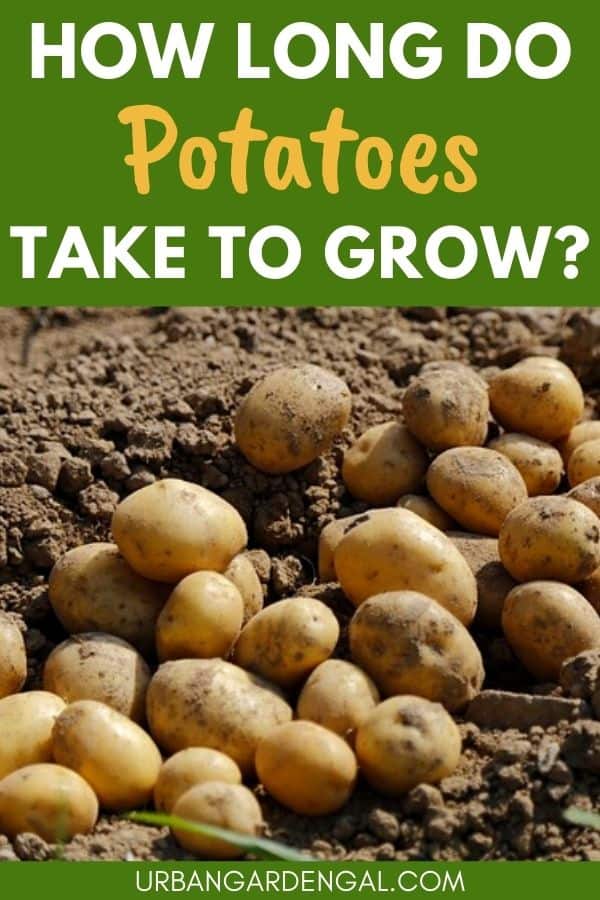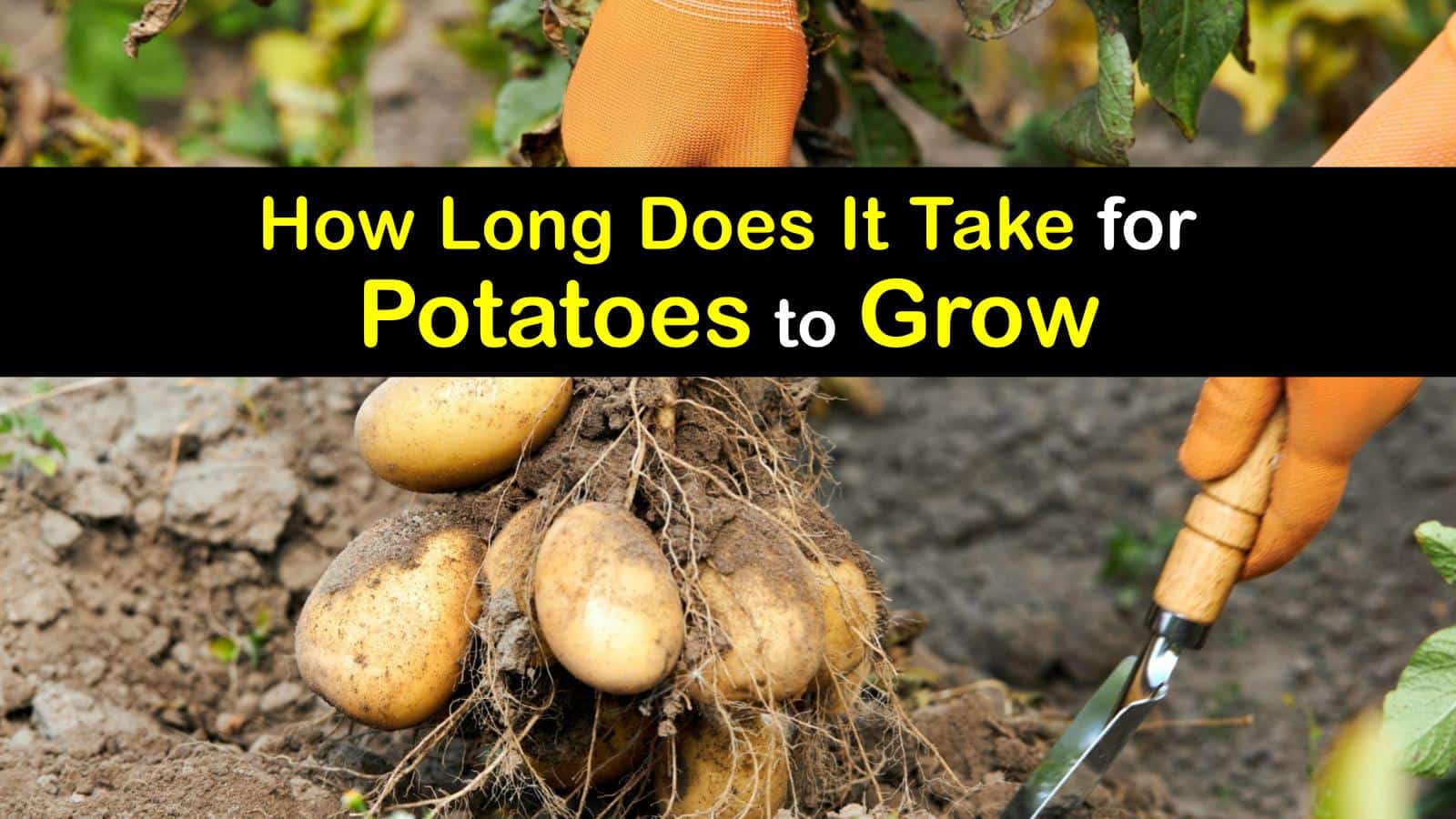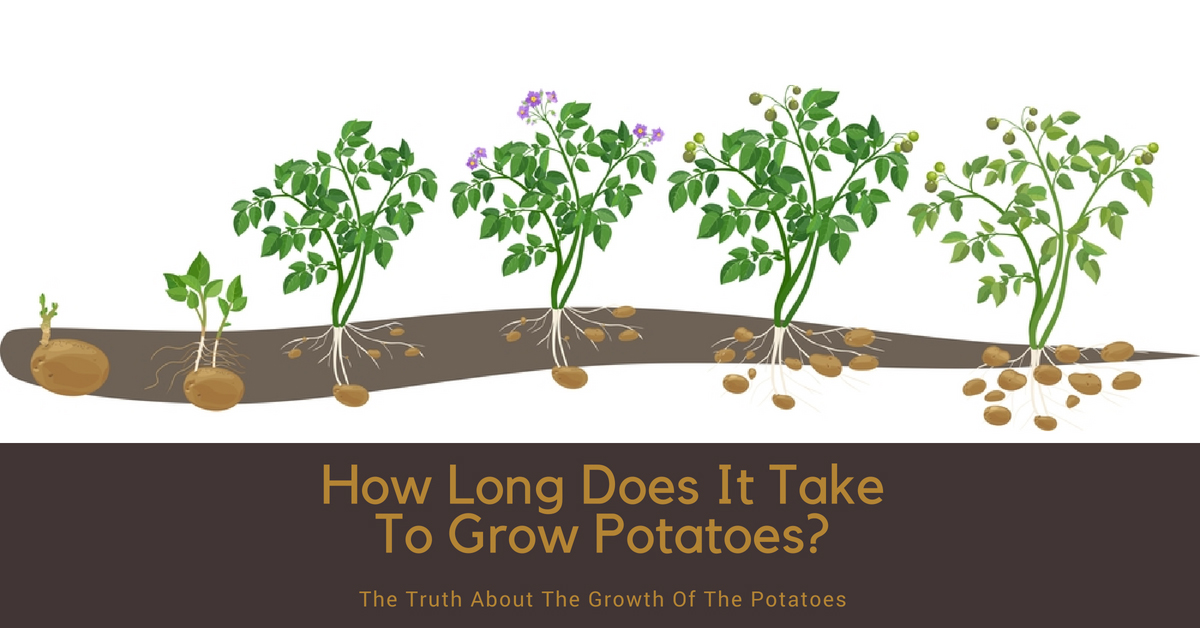So, you've caught the potato-growing bug, huh? Fantastic! Welcome to the club of slightly muddy, incredibly satisfied spud enthusiasts. But before you start picturing mountains of fries and creamy mashed potato, you're probably wondering: how long does it *actually* take to grow potatoes?
Well, buckle up buttercup, because the answer isn't quite as simple as “point and click” on your online shopping cart. But don't worry, it's not rocket science either. Think of it more like… baking a potato. You gotta prep, be patient, and then BOOM! Deliciousness.
The Great Potato Timeline: From Seed to Spud-tacular Harvest
Alright, let's break down the potato-growing journey. We're talking roughly 70 to 120 days from planting to harvest. I know, that's a pretty big window. But think of it like the estimated delivery time on your online shopping... it *could* be faster, it *could* be slower, but that's the general ballpark. A lot depends on the type of potato you're growing and the weather conditions you're dealing with.
Step 1: Chitting (Optional, But Recommended!)
Chitting, also known as sprouting, is like giving your potatoes a head start. Basically, you're waking them up before they even hit the soil. This involves placing your seed potatoes (these aren't seeds, but special potatoes grown for planting) in a bright, cool place for a few weeks, allowing them to develop little sprouts or "eyes." Think of it like giving your couch potato a gentle nudge towards the gym. It helps them get a move on! Chitting can shave a week or two off your overall growing time.
Step 2: Planting the Spuds
Planting time! This usually happens in early spring, after the last frost. Imagine the joy of tucking your little potato friends into their earthy beds! The timing depends on your climate, of course. It would be disastrous to plant them only to have a surprise frost turn your budding potato patch into a sad, brown wasteland! Plant them deep enough, around 4-6 inches, so that the potatoes have room to grow.
Step 3: Hilling - The Potato's Personal Trainer
As your potato plants grow, you’ll need to "hill" them. This basically means mounding soil around the base of the plants. This encourages more potato production along the buried stems! Think of it as building a cozy little potato fort for them. Hilling also protects the developing potatoes from sunlight, which can turn them green and bitter (nobody wants that!). Do this every few weeks as the plants get taller. Hilling is your potato's personal trainer, pushing them to be their best, most productive selves!
Step 4: The Waiting Game (and Pest Patrol!)
This is where the patience comes in. While you're waiting, keep an eye out for pests like potato beetles. These little guys can wreak havoc on your potato plants faster than you can say "chips and dip." Regularly check your plants and take action if you see any unwanted visitors. Organic pest control methods are your friend! Think of yourself as a potato bodyguard, fiercely protecting your precious cargo from hungry invaders.
Step 5: Harvest Time! Digging for Treasure
Finally! The moment you've been waiting for! How do you know when it's time to harvest? Well, the potato plants will start to flower. You can harvest "new potatoes" a few weeks after flowering. These are smaller and have thinner skins, perfect for boiling or roasting whole. If you want larger, more mature potatoes for storage, wait until the plants have completely died back. Then, get ready to dig! Think of it as a treasure hunt, but the treasure is delicious, starchy, and perfect for making mashed potatoes. Use a garden fork and gently lift the soil, unearthing your buried bounty.
Potato Power: Factors Affecting Growing Time
Remember that 70-120 day range? Here are a few things that can nudge you closer to either end of the spectrum:
- Potato Variety: Some varieties, like early-season potatoes, mature much faster than late-season potatoes.
- Weather: Potatoes love sunshine and well-drained soil. Extreme heat or cold can slow things down.
- Soil Quality: Rich, fertile soil is potato paradise. Poor soil can lead to smaller yields and longer growing times.
- Watering: Consistent watering is key, especially during dry spells.
So, there you have it! Growing potatoes is a journey, not a sprint. With a little planning, patience, and maybe a touch of potato-loving madness, you'll be enjoying homegrown spuds in no time. Happy growing!





